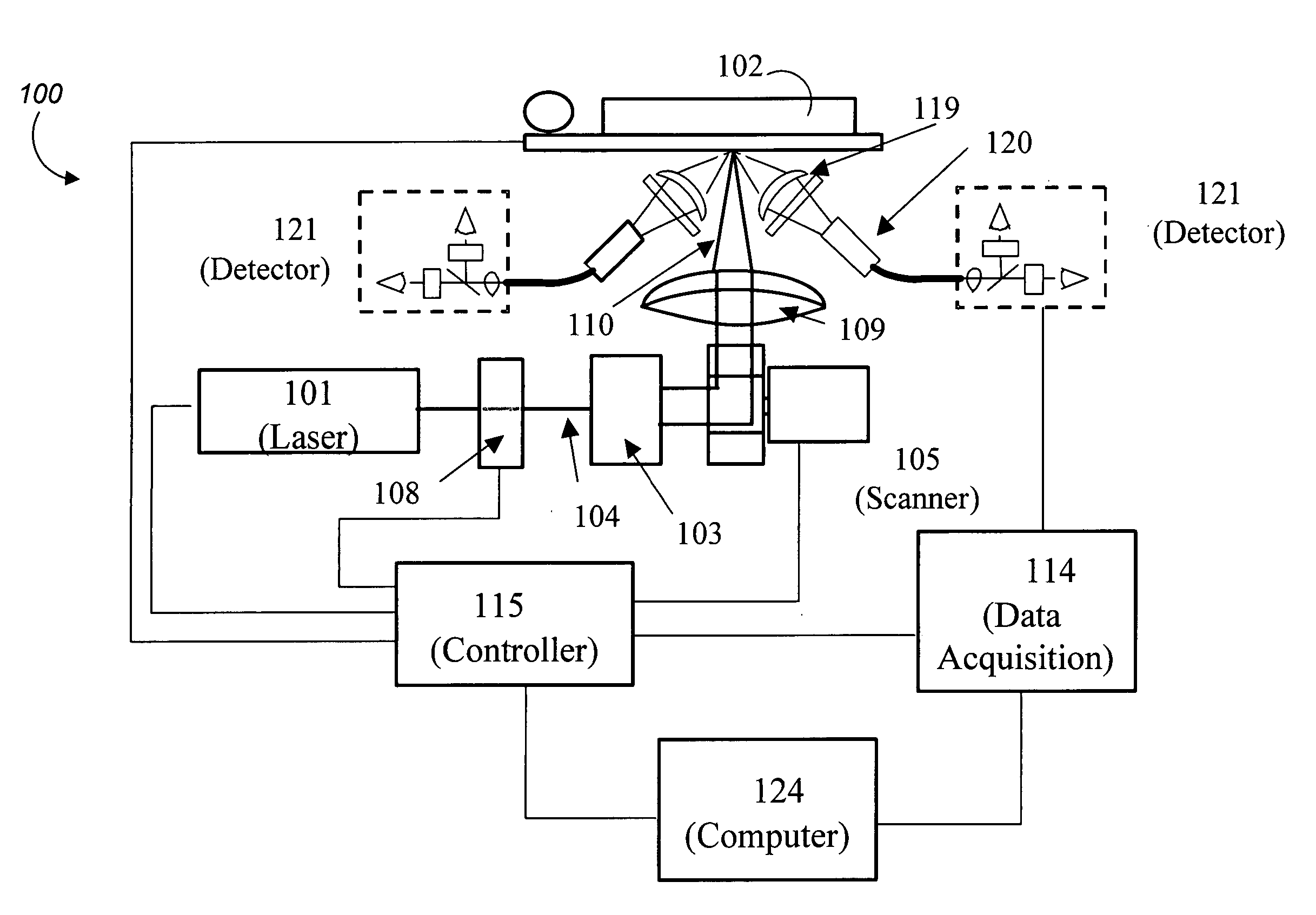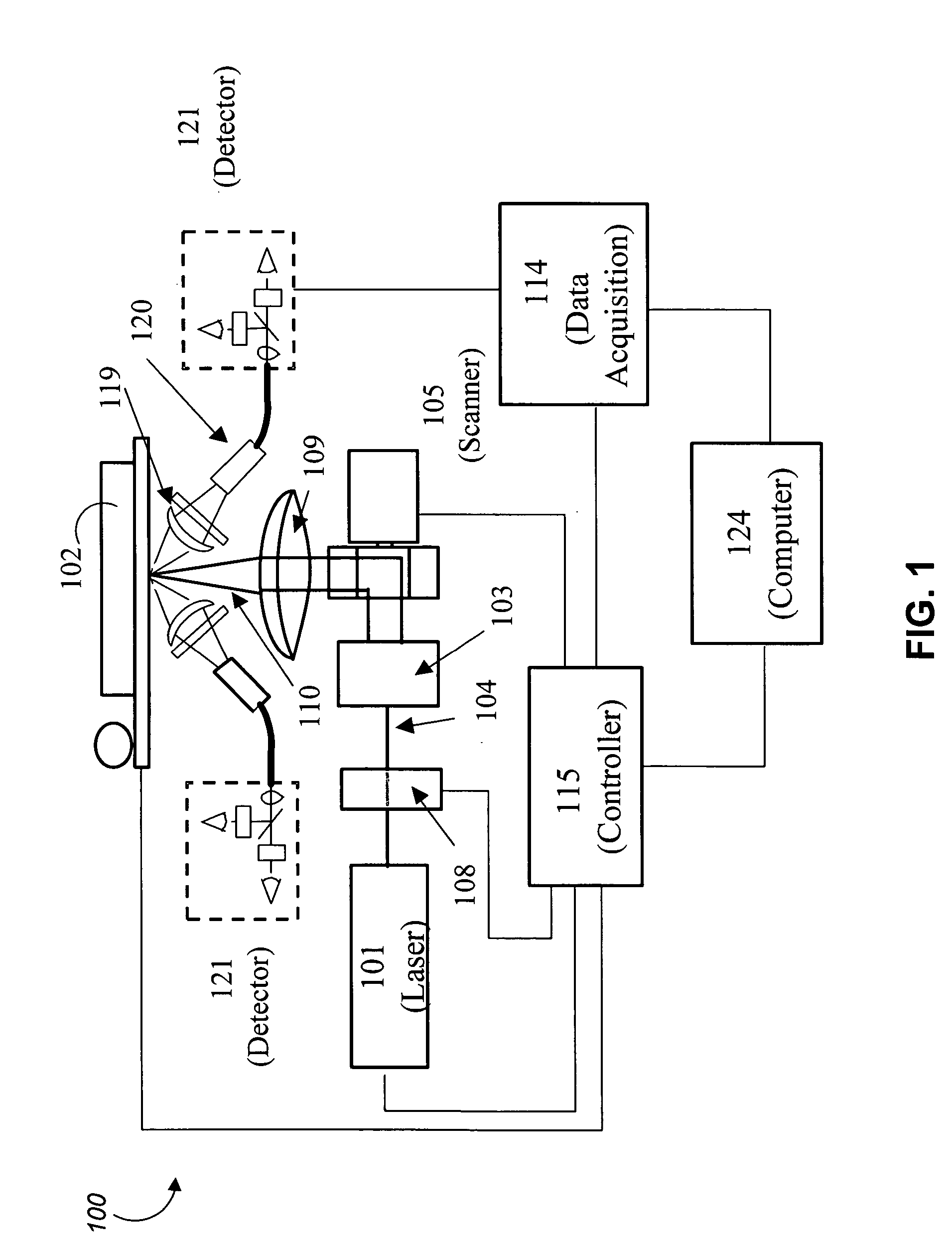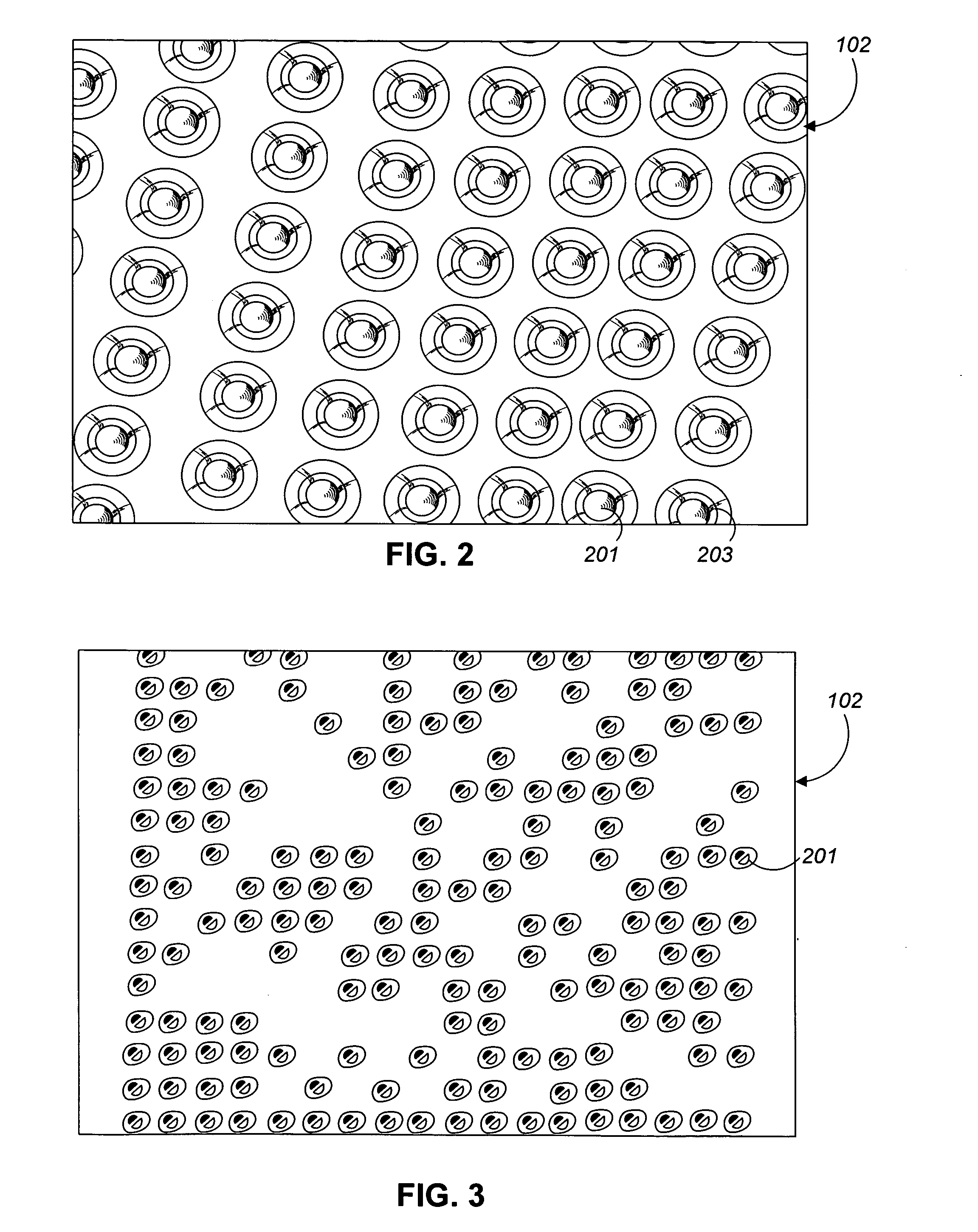Methods and apparatus for scanning small sample volumes
a technology for optical probes and sample volumes, applied in the direction of fluorescence/phosphorescence, instruments, laboratory glassware, etc., can solve the problems of numerous technical challenges
- Summary
- Abstract
- Description
- Claims
- Application Information
AI Technical Summary
Benefits of technology
Problems solved by technology
Method used
Image
Examples
Embodiment Construction
Overview of the Analysis System
[0027] The invention provides an improved apparatus for interrogating and analyzing miniaturized samples, such as samples located in a number of small sample wells on a transparent substrate. An apparatus and methods suitable for analyzing such samples have been described in U.S. patent application Ser. No. 10 / 927,748 entitled “TIME DEPENDENT FLUORESCENCE MEASUREMENTS” and in U.S. patent application Ser. No. 10 / 928,484 entitled “MEASURING TIME DEPENDENT FLUORESCENCE,” the entire disclosures of both of which were incorporated herein by reference above.
[0028] In the described embodiment, the apparatus uses a scanning light source, which can be focused onto a substrate containing samples, with the ability to discriminate against background noise or signal, and makes use of image contrast mechanisms. The apparatus can be operated in several distinct modes or combinations thereof, depending on what type of sample data needs to be collected.
[0029] In a f...
PUM
| Property | Measurement | Unit |
|---|---|---|
| volume | aaaaa | aaaaa |
| volume | aaaaa | aaaaa |
| volume | aaaaa | aaaaa |
Abstract
Description
Claims
Application Information
 Login to View More
Login to View More - R&D
- Intellectual Property
- Life Sciences
- Materials
- Tech Scout
- Unparalleled Data Quality
- Higher Quality Content
- 60% Fewer Hallucinations
Browse by: Latest US Patents, China's latest patents, Technical Efficacy Thesaurus, Application Domain, Technology Topic, Popular Technical Reports.
© 2025 PatSnap. All rights reserved.Legal|Privacy policy|Modern Slavery Act Transparency Statement|Sitemap|About US| Contact US: help@patsnap.com



